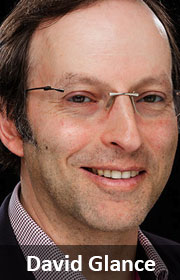 The Facebook Live video of the murder of 74-year-old Robert Godwin Sr by Steve Stephens has been watched at least 1,6m times.
The Facebook Live video of the murder of 74-year-old Robert Godwin Sr by Steve Stephens has been watched at least 1,6m times.
It took Facebook three hours to take the video down, and by that time it had been copied and circulated repeatedly by Facebook users.
In Sweden, three men were arrested after streaming the sexual assault of a woman live to a private Facebook group.
Facebook’s vice president for global operations wrote: “We disabled the suspect’s account within 23 minutes of receiving the first report about the murder video, and two hours after receiving a report of any kind. But we know we need to do better.”
Facebook was notified about the murder video an hour and 45 minutes after it had been posted.
There is a limit to what Facebook can actually do about preventing this sort of posting, short of banning what is now the core of the platform, video, and in particular, live video.
The idea that notoriety and 15 minutes of fame through mass media spurring murderers is not new. In the past, critics have argued that mainstream media has played a major role in publicising mass murderers and giving them the very thing that they crave. Not only that, but there has been a view that this process actually then spurs others into copycat crimes.
With social media and live streaming, mainstream media is no longer needed. Criminals, murderers and terrorists have found that they can go directly to a seemingly eager audience to view crime as it happens.
It is not only murderers who are turning to Facebook. The livestreaming of suicides has become an increasingly frequent occurrence.
On another level, Facebook and social media has been implicated in fuelling gang violence by allowing gangs to trade insults and make violent threats. It’s behaviour that has been termed “Internet banging” by sociologists Desmond Patton, Robert Eschmann and Dirk Butler, who have been studying this phenomenon.
For teens, cyberbullying and “being mean” online are the expected consequence of being online and using social media, especially Facebook.
The question that researchers and others are increasingly asking is whether the negative consequences of social media will inevitably outweigh any benefits.
The fundamental problem with social media, and more generally with the Internet, is the online disinhibition effect that lies at the heart of trolling and bad behaviour. The issue with bad behaviour online is that it becomes the new normal. As society readjusts to these new norms, online disinhibition kicks in again to move the norm to new extremes.

Another psychological phenomenon that may be at play is the bystander effect. People on social media can watch a video of a murder, suicide or rape and not take action, like reporting the video, because there is an assumption that because so many others are watching, somebody would have already taken that action.
Just as the world is getting fatter because we can’t say no to gratification from fats and sugars, social media is destined to become more violent and aggressive. The fascination with watching others behaving badly is too hard to resist, fuelling even further tendencies of exhibitionism and narcissism that then motivate more people to behave badly and record the experience online. To that extent, online exposure to bad behaviour becomes the cerebral equivalent to polluting the body with junk food.
Another macabre practice that has been fuelled by social media is the growth in people taking selfies at horror sites such as the Dachau concentration camp, and locations of disasters such as plane crash sites.
Of course, there is the balancing effect of people acting collectively through social media for individual and collective good but this, like exercise in combating obesity, takes effort and it is not at all certain that it can neutralise the negative aspects of social media.
Facebook and other social media sites are not able to address the growing problem playing out on their platforms. It is not even possible to criminalise the act itself as a deterrent if what is being depicted is already a crime. Bad behaviour online may be amenable to similar strategies used to target other poor behaviour like smoking and excessive drinking through regulation or even pricing. The US and other governments are taking this approach in dealing with cyberbullying.
The German government is also investigating Facebook for its role in inciting racial and ethnic hatred and could hold it accountable.
Ultimately, holding the companies that facilitate this behaviour accountable would force their hand to either limit what could be posted by having it moderated or simply restricting the service in some other way.![]()
- David Glance is director of the UWA Centre for Software Practice, University of Western Australia
- This article was originally published on The Conversation

